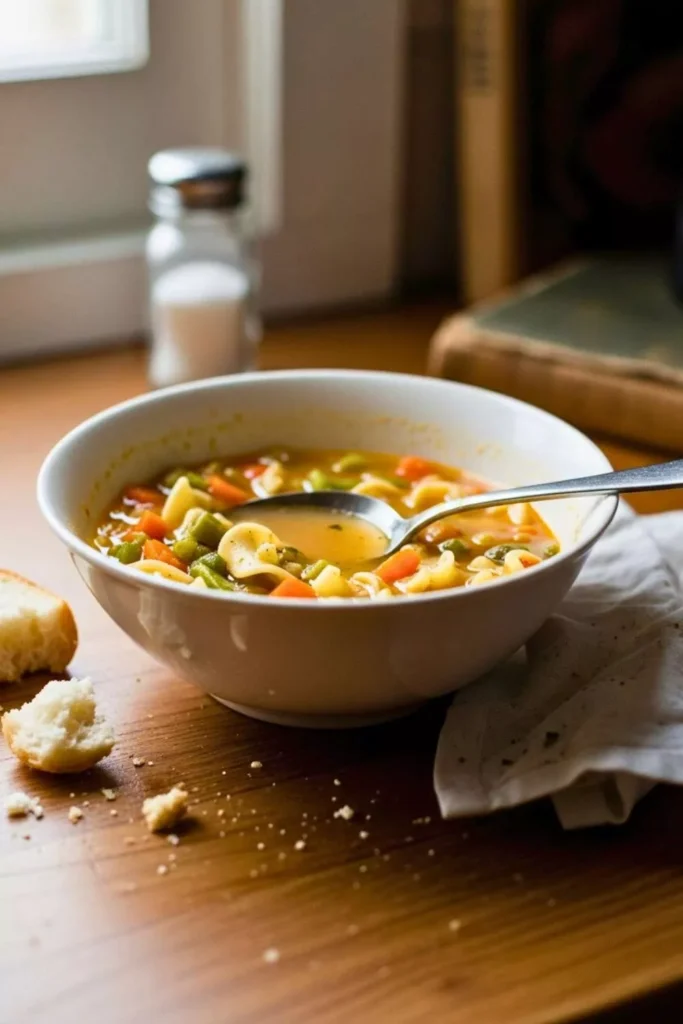There’s nothing better than a big pot of homemade soup simmering on the stove. But what do you do when you’ve made more than you can eat in one meal?
Storing leftover soup properly helps you keep it fresh, flavorful, and safe to eat later.
Whether it’s a creamy chowder, a chunky stew, or a light broth, each type of soup has its own storage needs.
How to Store Leftover Soup Properly
Here’s a complete guide on how to store leftover soup the right way.
Cool Before Storing
Never put hot soup directly into the fridge. It raises the temperature inside and can spoil other foods. Let the soup cool for about 30 to 60 minutes at room temperature first.
To speed up cooling, divide the soup into smaller portions and pour them into shallow containers.
Stir occasionally to release heat faster.
You can also place the containers in a cold water bath for a few minutes—just make sure no water gets inside.

Choose the Right Containers
The best containers for soup storage are airtight and leak-proof. Glass containers or BPA-free plastic containers with tight-fitting lids work well.
Mason jars are also a good option, but leave some space at the top because liquids expand when frozen.
For freezer storage, use freezer-safe bags or containers.
Lay the bags flat on a baking sheet to freeze them in thin, even layers. This saves space and makes thawing quicker later.
Refrigerating Soup
Most soups last 3 to 4 days in the refrigerator. Store them in airtight containers and place them on a shelf (not in the fridge door, where temperatures fluctuate more).
If your soup contains cream, milk, or seafood, try to eat it within 2 to 3 days for the best quality. Broth-based soups or vegetable soups can last a little longer.
Before reheating, check the smell and texture. If anything seems off, it’s best to toss it.
Freezing Soup
Freezing is the best way to make soup last for weeks or even months. Most soups freeze beautifully, but a few need special care.
Soups That Freeze Well:
- Broth-based soups (like chicken noodle or vegetable)
- Bean and lentil soups
- Tomato-based soups
Soups That Need Extra Attention:
- Creamy soups and chowders can separate after freezing. To fix this, stir in a bit of cream or milk after reheating.
- Soups with pasta or rice can become mushy. Freeze the soup without them, then add fresh pasta or rice when reheating.
Label each container with the name and date before freezing. Most soups stay good for up to 3 months in the freezer.
Thawing and Reheating
The safest way to thaw frozen soup is in the refrigerator overnight. If you’re in a hurry, you can thaw it in the microwave using the defrost setting or heat it directly on the stove over low heat.
Stir occasionally to make sure it heats evenly.
For creamy soups, whisk gently while reheating to bring the texture back together. Always heat soup until it’s steaming hot—about 165°F (74°C)—before serving.
Portioning for Convenience
Consider dividing your soup into individual portions before storing. This makes it easy to reheat only what you need without thawing the whole batch.
It’s especially useful for meal prep or quick weekday lunches.
Freeze portions in silicone muffin trays or small containers.
Once solid, transfer them to a larger freezer bag. You’ll have single servings ready whenever you need them.
Avoid Common Mistakes
- Don’t freeze soup in glass jars filled to the top. It can crack as the liquid expands.
- Don’t leave soup out overnight. Bacteria grow quickly at room temperature.
- Don’t refreeze soup once it’s been thawed completely. Only refreeze if it was thawed in the refrigerator and hasn’t been reheated.
Conclusion
Storing leftover soup isn’t complicated—it just takes a little care. Cooling it properly, using the right containers, and knowing how long it lasts can help you enjoy it safely for days or even months.
Whether you’re saving a cozy chicken noodle soup or a hearty chili, proper storage keeps the flavors fresh and your meals ready for whenever you need them.
The next time you make a big pot, go ahead and double the batch—because now you know exactly how to store the leftovers.